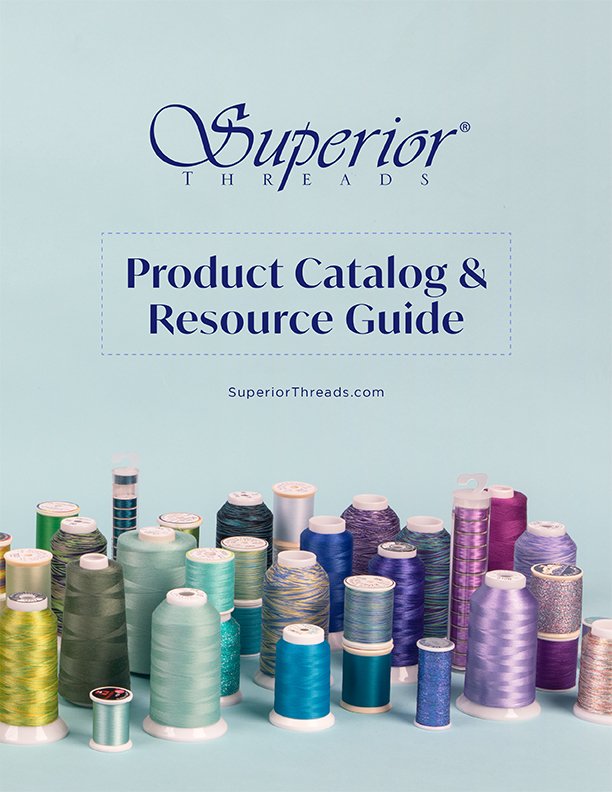Superior Education
CONES AND SPOOLS
- THREAD DELIVERY
- CROSS WOUND
- STACK WOUND
Thread Delivery of Cones and Spools
When sewing or quilting with spools of thread, we recommend using the vertical pin on top of your home sewing machine. Most of us have been taught to place the spool horizontally on the spool pin holder with the thread unwinding over the end of the spool. While doing this is not of itself a bad thing to do, it can cause extra tension on the top thread. When thread is untwisted over the end of the spool, it adds an extra twist with each rotation. More tension can lead to breakage and uneven stitches.
Spools of thread are usually wound with a straight wind (also called a parallel wind or stack wind). An easy way to remember how thread should unwind off the spool: straight wind on; straight wind off. By positioning the spool in such a way that the thread unwinds straight from the side, you will notice that no extra tension is applied to the thread because the spool rotates as the thread unwinds. The thread isn't working harder than the spool to unwind.
If you are using a good-quality thread, have the thread positioned on the vertical pin and are still experiencing thread breakage, check the needle size and the tension settings. Assuming you are using a high quality thread, 90% of all breakage can be traced back to the needle (too small) or tension (too tight). Our Troubleshooting Guide will take you step-by-step on an easy path to solve sewing-related problems.

Most of our thread lines are available in cones and spools
We see a shift happening in the market with spool sizes and the amount of thread used when sewing or quilting. The trend has already started that cones of thread are outselling spools. This is because traditional machine spools cannot hold as much thread as cones. Much of the cost of a spool of thread is in the winding process, so the larger the spool, the greater the savings. If you sew or quilt using a cone with a large opening in the base, it won't fit on the standard spool pin holders on most machines. The solution is to use a thread holder or a heavy-duty thread stand. The thread holder and thread stand is advantageous over other home remedies such as a mason jar or tall cup because it stabilizes the thread and elevates the thread higher than the machine as it feeds into the machine. The vertical arm of the thread stand lifts the thread higher than the machine which then facilitates an even feed without added tension.
The Superior Thread Holder can accommodate any type of thread which is wound on a cone as well as decorative threads, such as metallic threads, that are meant to unwind off the side. The thread on cones is cross-wound and is meant to pull off over the top as the cone sits flat on the thread stand. It is not recommended to use an adapter to place the cone of thread on the vertical pin holder. A heavy cone placed on the vertical pin holder puts too much drag on the thread and prevents smooth rotation which will affect the stitch quality.

 View Our Product Catalog
View Our Product Catalog